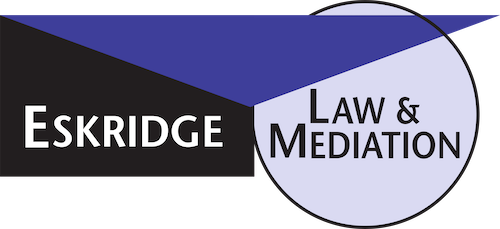June 9, 2020
The California Fair Employment and Housing Act (the “FEHA”) [Gov. Code §§ 12900, et seq.] prohibits sexual harassment in the workplace. The FEHA provides that it is an unlawful employment practice “[f]or an employer . . . because of . . . sex . . . to harass an employee . . . .” [Gov. Code § 12940(j)(1).] However, there are numerous forms of sexual harassment which are often overlooked. Offensive conduct need not be motivated by sexual desire to constitute actionable sexual harassment. [Gov. Code § 12940(j)(4)©.]
Link: SEXUAL FAVORITISM HARASSMENT AND DISCRIMINATION IN VIOLATION OF THE FAIR EMPLOYMENT AND HOUSING ACT
Prohibited sexual conduct in the workplace also extends to harassment by a co-worker. The FEHA states that “[sexual h]arassment of an employee . . . by [a co-worker], other than an agent or supervisor, shall be unlawful if the entity, or its agents or supervisors, knows or should have known of this conduct and fails to take immediate and appropriate corrective action. [Gov. Code § 12940(j)(1).] According to the FEHA, “‘harassment’ because of sex includes sexual harassment, gender harassment, and harassment based on pregnancy, childbirth, or related medical conditions.” [Gov. Code § 12940(j)(4)(C).]
Hostile environment sexual harassment cases may involve various forms of verbal and physical conduct, of either a sexual or nonsexual nature, which have the purpose or effect of creating a hostile or offensive working environment. Therefore, sexual harassment under the FEHA extends to verbal harassment, including “epithets, derogatory comments or slurs”; physical harassment, including “assault, impeding or blocking movement, or any physical interference with normal work or movement”; and visual harassment, including “derogatory posters, cartoons, or drawings.” [2 Cal. Code Regs. § 11019(b)(2)(c); see also Miller v. Department of Corrections (2005) 36 Cal.4th 446.]
The FEHA prohibits nonsexual hostile conduct as a form of sexual harassment. According to Miller v. Department of Corrections, “the prohibition against sexual harassment includes a broad range of conduct, expressly or impliedly conditioning employment benefits on submission to or tolerance of unwelcome sexual advances, to the creation of a work environment that is hostile or abusive on the basis of sex. Such a hostile environment may be created even if the plaintiff never is subjected to sexual advances.” [Miller v. Department of Corrections (2005) 36 Cal.4th 446, 462 (emphasis added).]
In Miller, there was widespread sexual favoritism of a warden’s paramours which conveyed demeaning messages to other employees that he viewed women as “sexual playthings.” [Miller v. Department of Corrections (2005) 36 Cal.4th 446, 464.] Therefore, even in the absence of unwanted sexual advances or comments, a plaintiff may establish a hostile environment sexual harassment claim by showing that the employer created a demeaning atmosphere.
In Accardi v. Superior Court, sexual harassment was found when the plaintiff alleged that she had been subjected to long-standing ridicule, insults, threats, and strenuous work requirements from male co-workers who resented her entry into a position in law enforcement. [Accardi v. Superior Court (1993) 17 Cal.App.4th 341, 348.]
To prevail in a sexual harassment lawsuit, the conduct alleged must be so severe or pervasive to create a discriminatorily hostile or abusive working environment. [Meritor Savings Bank, FSB v. Vinson (1986) 477 U.S. 57, 67.] The court in Harris v. Forklift Systems, Inc. used this statement to decide that “[W]hether an environment is ‘hostile’ or ‘abusive’ can be determined only by looking at the circumstances. This may include the frequency of the discriminatory conduct, its severity, whether it is physically threatening or humiliating, or a mere offensive utterance; and whether it unreasonably interferes with an employee’s work performance.” [Harris v. Forklift Systems, Inc. (1993) 510 U.S. 17, 21-23.] The court further stated that the working environment must be evaluated in light of the totality of the circumstances. The court noted that an “objectively hostile or abusive work environment” is created when “a reasonable person would find [it] hostile or abusive,” and the victim subjectively perceives it as such. [Id.]
Additionally, employers have an affirmative duty to take all reasonable steps necessary to prevent discrimination and harassment from occurring. [Gov. Code § 12940(k).] Section 12940(k) creates a separate statutory tort action with the usual tort elements (duty of care to plaintiff, breach of duty, causation, and damages). [Trujillo v. North County Transit Dist. (1998) 63 Cal.App.4th 280, 286.]
Once an employer learns of a sexual harassment complaint, an employer has a duty to conduct a prompt and impartial investigation to determine whether the complaint is justified. [Swenson v. Potter (9th Cir. 2001) 271 F.3d 1183, 1193.] Curious what the investigation should entail? Give us a call.
Need more information?
ESKRIDGE LAW may be contacted by phone (310/303-3951, by fax (310/303-3952) or by email (geskridge@eskridgelaw.net). Please visit our website at eskridge.hv-dev.com.
This article is based on the law as of the date posted at the top of the article. This article does not constitute the provision of legal advice, and does not by itself create an attorney-client relationship with Eskridge Law.
